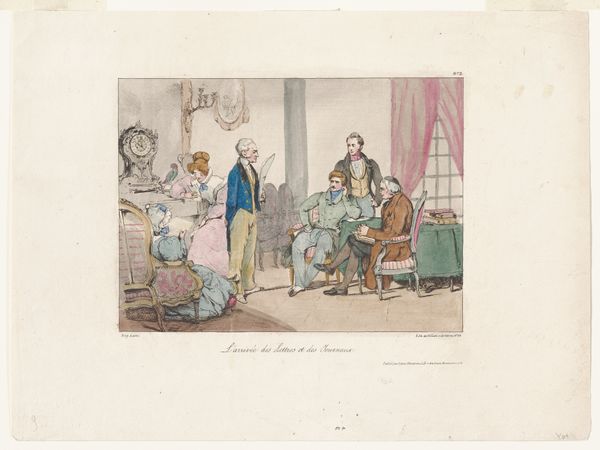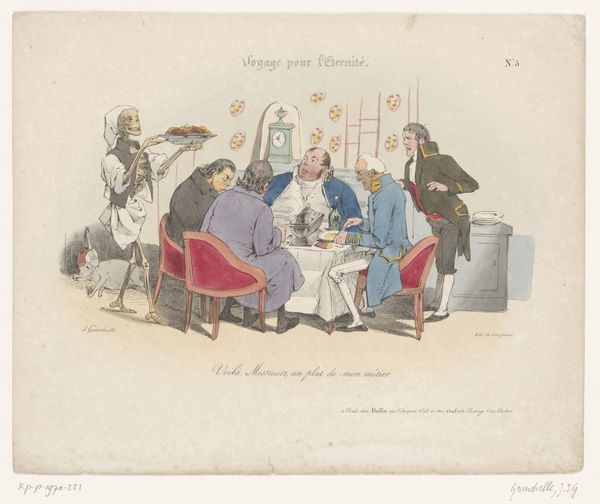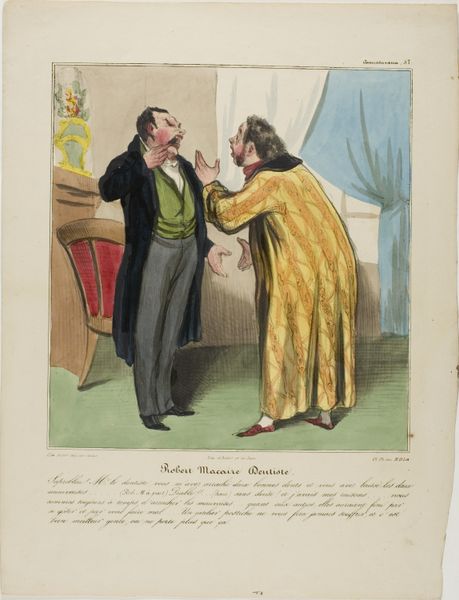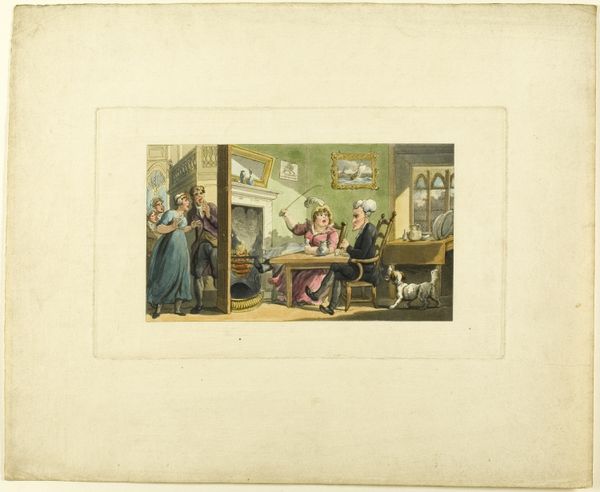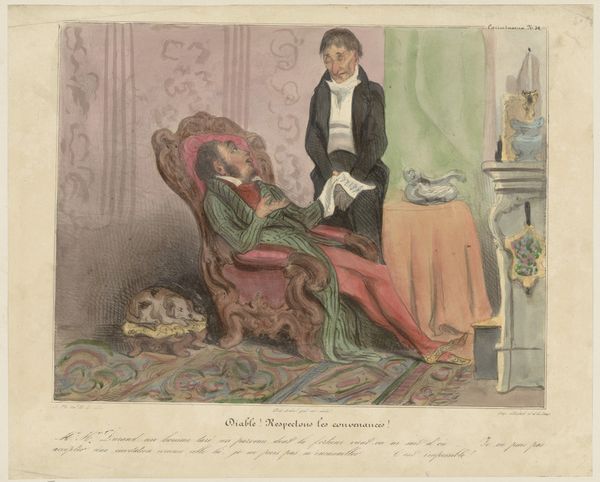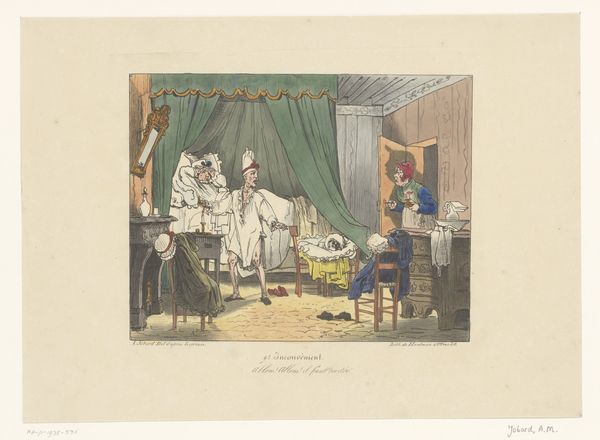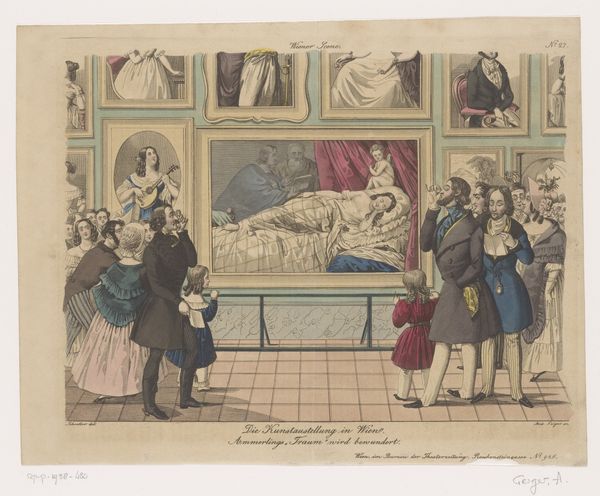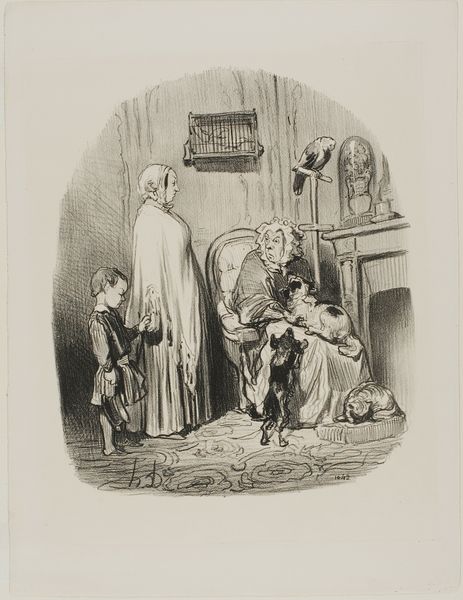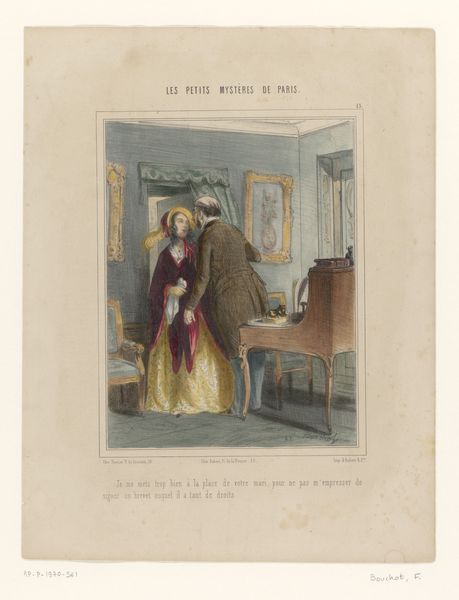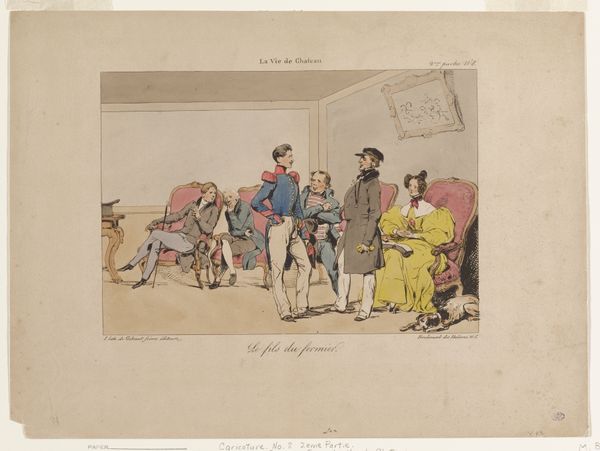
Huiseigenaar voelt niets voor excuses en smeekbede van vrouw die achterloopt met de betaling van de huur 1836 - 1838
0:00
0:00
honoredaumier
Rijksmuseum
drawing, lithograph, pen
#
portrait
#
drawing
#
narrative-art
#
lithograph
#
caricature
#
caricature
#
romanticism
#
pen
#
genre-painting
Dimensions: height 273 mm, width 364 mm
Copyright: Rijks Museum: Open Domain
Editor: Here we have Honoré Daumier's "Huiseigenaar voelt niets voor excuses en smeekbede van vrouw die achterloopt met de betaling van de huur," a lithograph from around 1836 to 1838. It’s held at the Rijksmuseum. The scene definitely conveys a strong sense of social tension and, well, awkwardness! What's your take on it? What historical perspectives can we bring to bear? Curator: It’s crucial to remember that Daumier's caricatures weren’t just funny drawings; they were potent social commentaries published in newspapers. How do you think this image engaged with public sentiment at the time, regarding landlords and tenants? Consider the rise of the bourgeois class in France. Editor: I imagine this spoke directly to a common struggle! The landlord, he’s dressed rather extravagantly while the woman is almost begging with her children. Is Daumier taking sides, using the image as propaganda of some sort? Curator: Absolutely. Consider the social context: the July Revolution of 1830 had recently occurred, yet socio-economic inequalities persisted, if not worsened for some. Daumier frequently critiqued the bourgeoisie’s insensitivity toward the plight of the working class. This image probably stirred up a lot of conflicting emotions in the newspaper readership. It would appear he’s making visible an imbalance of power. Editor: So it’s less about timeless art and more about timely political commentary? Though one informs the other. Curator: It's both, of course. Daumier captured a specific moment of social friction, but the underlying theme of economic disparity remains relevant, unfortunately. Do you see how the exaggerated features play into the broader tradition of social satire? Editor: Yes, it's making me rethink how art engages in social discourse in both the past and the present! Curator: Indeed. Examining the visual language of satire helps us decode the political messaging embedded within seemingly simple scenes. Editor: Thanks, it definitely gave me food for thought. It's also useful to remember this caricature served as a vehicle for Daumier's social critiques, not just some humorous take on the world.
Comments
No comments
Be the first to comment and join the conversation on the ultimate creative platform.
